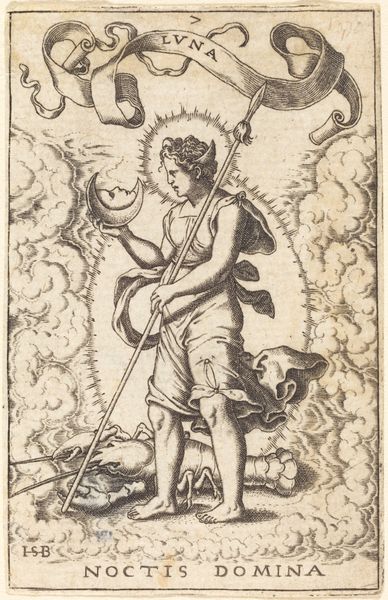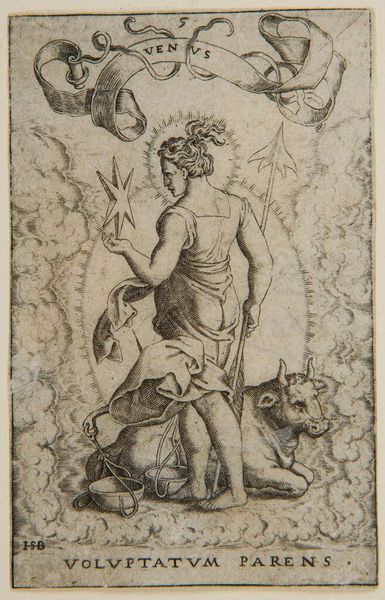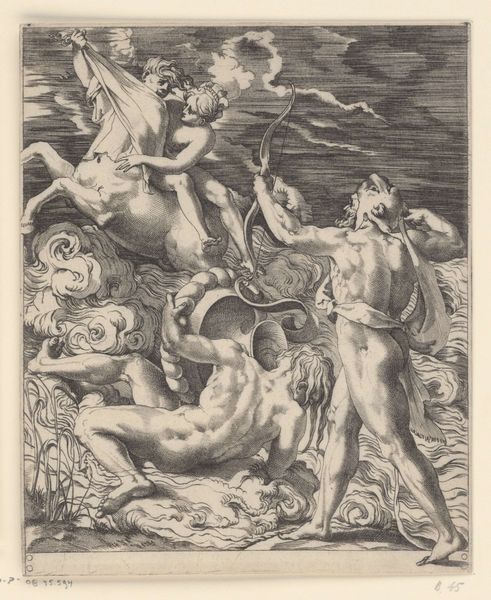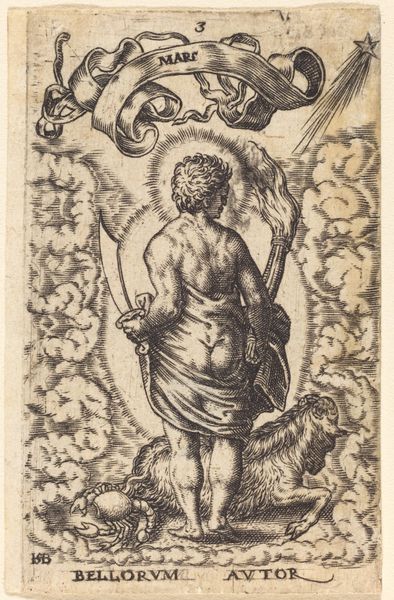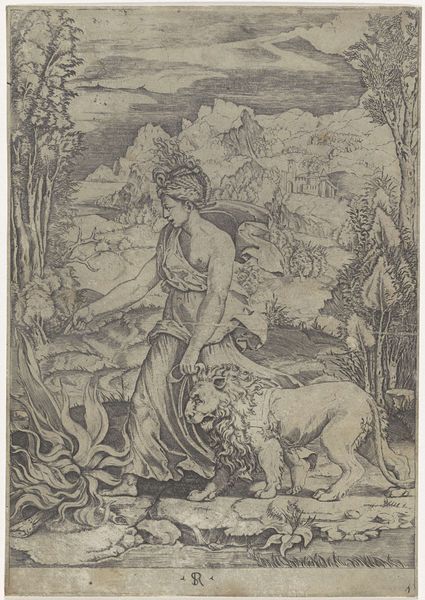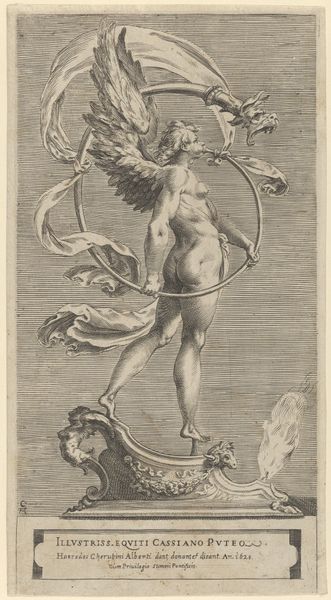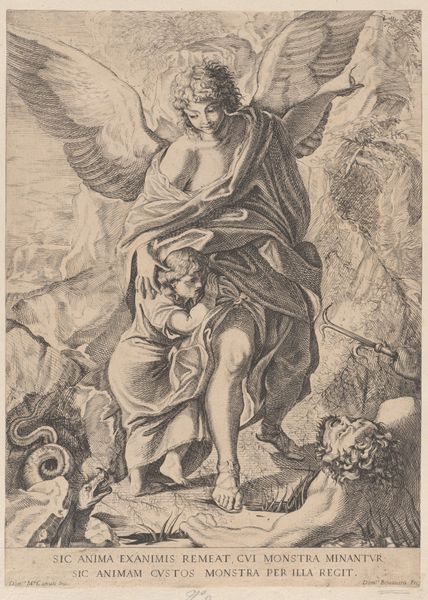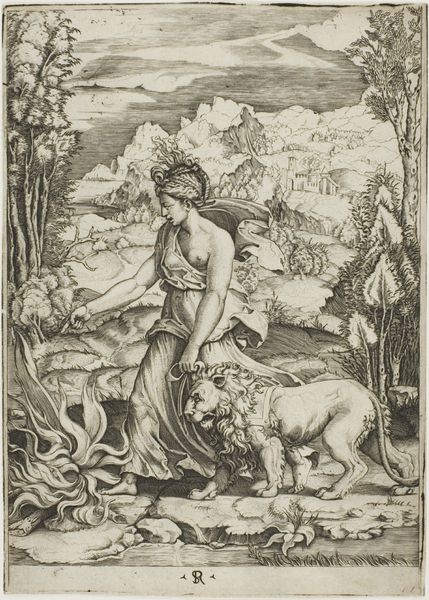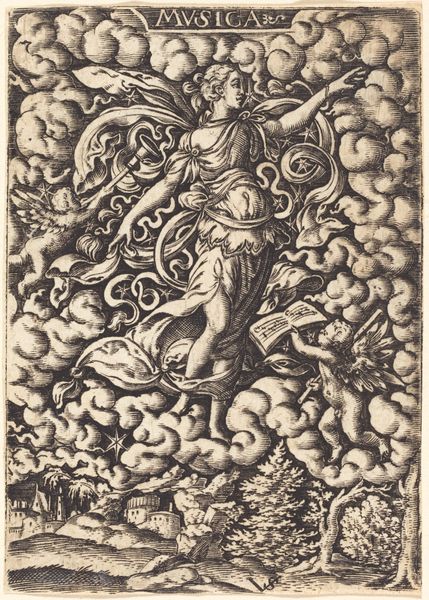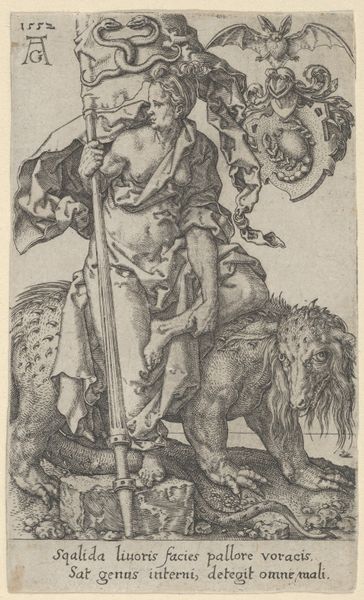
drawing, print, ink, engraving
#
drawing
#
allegory
#
pen drawing
# print
#
figuration
#
11_renaissance
#
ink
#
northern-renaissance
#
engraving
Copyright: National Gallery of Art: CC0 1.0
Curator: This engraving by Sebald Beham is entitled “Venus,” a Northern Renaissance take on the classical goddess. I find it immediately striking with the detail, achieved entirely with ink. The intricate line work that builds the textures and tonality— it’s just impressive. Editor: The figure really dominates, doesn’t it? There’s an assertion of power here that speaks to me. It pushes back on the objectification usually implicit in the Venus mythos. The artist isn't afraid to play with androgyny either—consider the musculature and stern facial features combined with her rather elaborate coiffure. Curator: Let's delve into the processes at work here. Beham, part of the Little Masters group in Nuremberg, was deeply invested in pushing the boundaries of printmaking. Examining this small plate engraving, it's clear he mastered the labor-intensive techniques that would popularize images for the wider market. Prints such as this would make this accessible and consumable within contemporary society. Editor: Right, the material availability of images through print, in this era of religious reformations, it gave everyday people access to powerful imagery, encouraging reflection. Consider Venus—haloed, standing triumphantly with an authoritative gaze while holding a radiant star and a warrior's spear! We're presented with Venus as not just beauty, but strategy, knowledge, and war. How might interpretations change when access is expanded outside traditional patriarchal religious structures or monarchic court systems? Curator: The materiality definitely ties to wider changes; prints would have been acquired, collected, and then disseminated across Europe. And thinking about craft versus art, it shows these works and processes were central to intellectual and aesthetic life, which for a long time art history would not emphasize. Editor: Exactly! And remember that the artist has also inscribed text at the base of the print – "Voluptatum Parens". “Parent of Pleasure” casts Venus as the originator of joy while simultaneously acknowledging the multifaceted nature of female power. We might consider her both mother and warrior, celestial being, and powerful political pawn. Curator: Examining art like this lets us understand more than just aesthetics, it's also the labor, the markets and the changing means of production in the 16th century. Editor: Absolutely! These images were revolutionary, giving power and agency to everyday people by connecting social commentary with nuanced artistic representation. It challenges a single interpretation by positioning identities, beauty, war and reform within complex cultural narratives.
Comments
No comments
Be the first to comment and join the conversation on the ultimate creative platform.
